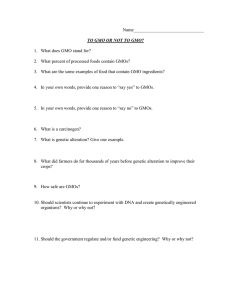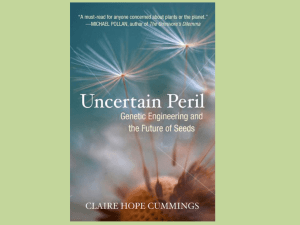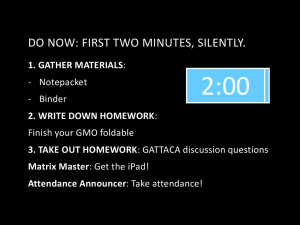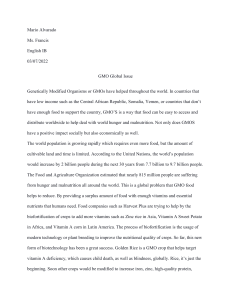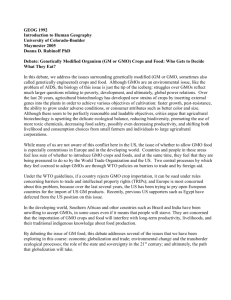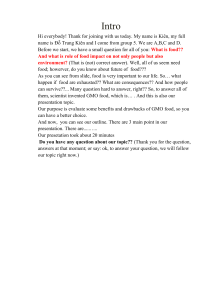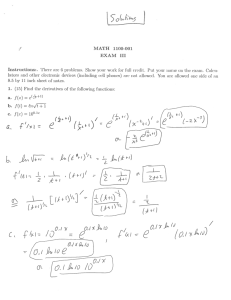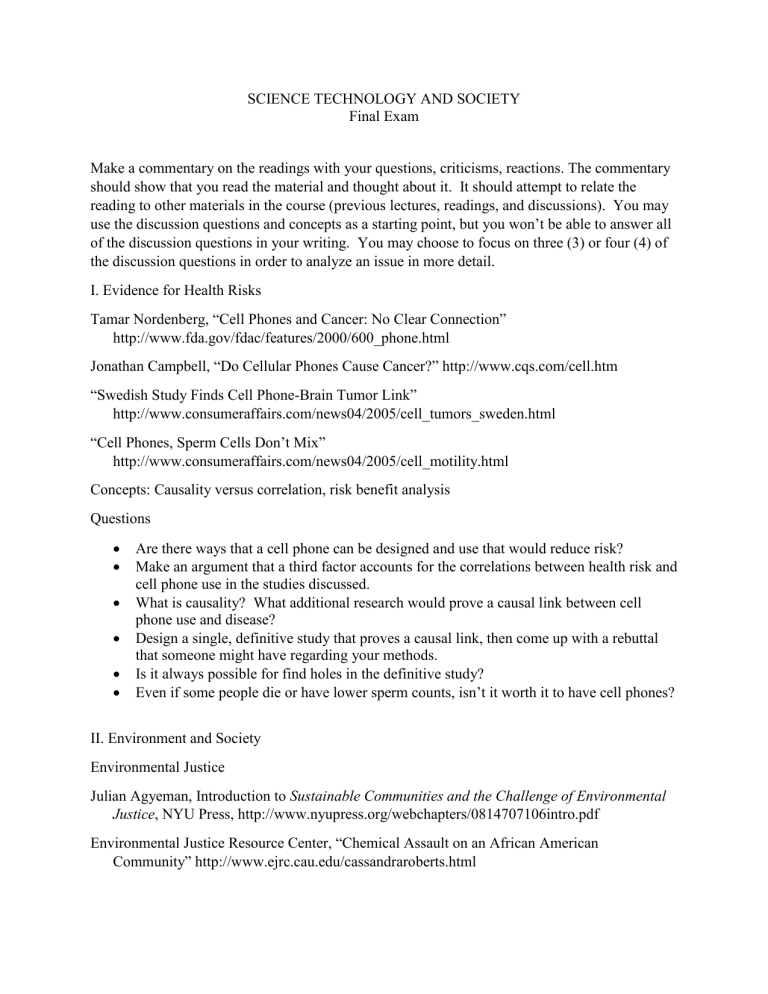
SCIENCE TECHNOLOGY AND SOCIETY Final Exam Make a commentary on the readings with your questions, criticisms, reactions. The commentary should show that you read the material and thought about it. It should attempt to relate the reading to other materials in the course (previous lectures, readings, and discussions). You may use the discussion questions and concepts as a starting point, but you won’t be able to answer all of the discussion questions in your writing. You may choose to focus on three (3) or four (4) of the discussion questions in order to analyze an issue in more detail. I. Evidence for Health Risks Tamar Nordenberg, “Cell Phones and Cancer: No Clear Connection” http://www.fda.gov/fdac/features/2000/600_phone.html Jonathan Campbell, “Do Cellular Phones Cause Cancer?” http://www.cqs.com/cell.htm “Swedish Study Finds Cell Phone-Brain Tumor Link” http://www.consumeraffairs.com/news04/2005/cell_tumors_sweden.html “Cell Phones, Sperm Cells Don’t Mix” http://www.consumeraffairs.com/news04/2005/cell_motility.html Concepts: Causality versus correlation, risk benefit analysis Questions Are there ways that a cell phone can be designed and use that would reduce risk? Make an argument that a third factor accounts for the correlations between health risk and cell phone use in the studies discussed. What is causality? What additional research would prove a causal link between cell phone use and disease? Design a single, definitive study that proves a causal link, then come up with a rebuttal that someone might have regarding your methods. Is it always possible for find holes in the definitive study? Even if some people die or have lower sperm counts, isn’t it worth it to have cell phones? II. Environment and Society Environmental Justice Julian Agyeman, Introduction to Sustainable Communities and the Challenge of Environmental Justice, NYU Press, http://www.nyupress.org/webchapters/0814707106intro.pdf Environmental Justice Resource Center, “Chemical Assault on an African American Community” http://www.ejrc.cau.edu/cassandraroberts.html Concepts: Justice, sustainability, local knowledge, lay expertise, transmission/diffusion model, deliberative and inclusive processes Questions: • • • • • How is the discrimination in the case study by the Environmental Justice Resource Center similar to and different from genetic discrimination? What is a just society? How are justice and equality related? In what ways do societal goals for justice (often known as “red” or “brown” goals) exist in a trade-off relationship with goals for sustainability? What is sustainable development? Is it possible for a society to continue to grow and to be sustainable? Are deliberative and inclusive institutions an adequate solution for environmental justice problems? III. Recycling and Zero Waste Jeff Wolovitz, “The Living Machine,” http://www.rps.psu.edu/0009/machine.html Environment Canada, “Packaging Stewardship” http://www.ec.gc.ca/epr/en/stewardship.cfm Environment Canada, “Extended Producer Responsibility” http://www.ec.gc.ca/epr/en/epr.cfm Rocky Mountain Institute, “What is Natural Capitalism?” http://www.rmi.org/sitepages/pid564.php Concepts: zero waste, green design, eco-innovation, stewardship versus EPR (extended producer responsibility) Questions: • • • What is the difference between stewardship and EPR? Which one would manufacturing firms prefer? The Natural Capitalism perspective of the Rocky Mountain Institute suggests that businesses can “eco-innovate” and make an even greater profit. In other words, green design is profitable. Does this make sense to you? If so, can you explain why all businesses haven’t rushed into this area? Why is biology now a model for engineering and design? Can you think of cases where the analogy breaks down? IV. Genetics and Society: Genetically Modified Food Anderson, Dan. “Biotechnology Risk Management: The Case of Genetically Modified Organisms (GMOs)” CPCU Journal 54 no4 215-30 Winter 2001 (from electronic journal collection) Bianchi, Stefani 2004 “Anti-GM Movement Spreads Across Europe” http://www.commondreams.org/headlines04/0422-05.htm Concepts: Social movements, risk, public understanding of science Questions: Why do you think GMO food provoked a strong social movement in opposition to it? (What are the causes of a social movement’s mobilization?) Do you think that the public has failed to understand the risks associated with GMO food, and is the real problem one of communicating knowledge to the public? Even if there is no proven risk, should the public have a right to reject GMO crops? Do you think GMO crops should be banned completely or just subjected to regulations? What kinds of regulations should GMO crops require? Should it be the same level as clinical trials of drugs? If not, what lower level of regulatory hurdle should be required? Should a country have the right to ban imports of GMOs? What if the US goes to the World Trade Organization and says that banning GMOs is a restriction of free trade? Do you agree? (Design) Should regulatory hurdles be lower for different types of GMO crops? For example, should Golden Rice be in a different category from Bt corn? How are the design of the GMO crop and the regulatory policy related? N.B. DO NOT JUST CUT AND PASTE discussion from the article. Research and have your personal input in the discussion. Send your examinations thru my email address: andykiaki@yahoo.com.ph Deadline will be on January 18, 2021. Be guided of this rubric: Contents Organization Technicality Timeliness
